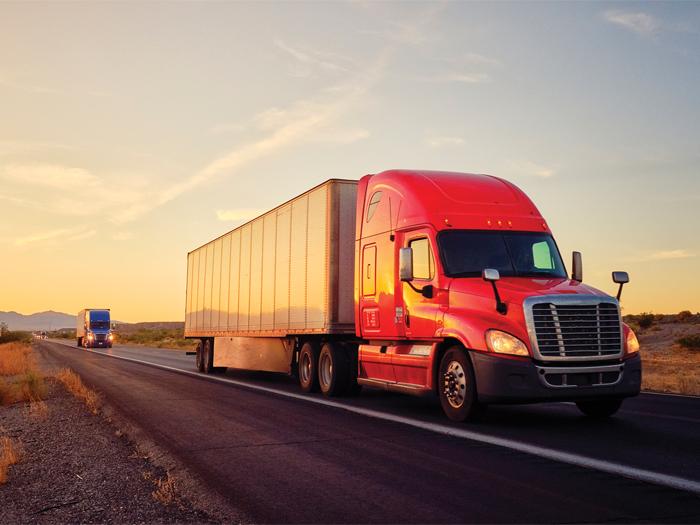The trucking industry has always been a complex and high-risk sector, with insurance costs playing a significant role in fleet management expenses. However, the rise of telematics technology is transforming how insurers assess and price risk for trucking companies. By providing real-time data on vehicle performance, driver behavior, and route conditions, telematics is enabling more precise and dynamic insurance models. In this article, we’ll explore how telematics is reshaping trucking insurance costs, the benefits and challenges for fleets, and what the future holds for this evolving intersection of technology and risk management.
Table of Contents
- The Impact of Real-Time Data on Risk Assessment in Trucking Insurance
- Enhancing Driver Safety Through Telematics Monitoring and Its Effect on Premiums
- Cost Savings Opportunities for Trucking Companies Leveraging Telematics
- Implementing Telematics Solutions to Optimize Insurance Benefits and Minimize Claims
- The Way Forward
The Impact of Real-Time Data on Risk Assessment in Trucking Insurance
In trucking insurance, the integration of real-time data is revolutionizing how insurers assess risks. Leveraging telematics devices installed in trucks, insurance companies now receive a continuous stream of driver behavior metrics, vehicle performance, and environmental conditions. This granular data enables a much more precise evaluation of risk compared to traditional methods that relied heavily on historical claims and static driver profiles. Real-time monitoring highlights dynamic factors such as harsh braking, rapid acceleration, and time spent on risky routes, offering a multidimensional picture of risk that can adjust premiums proactively.
Moreover, the benefits extend beyond better risk evaluation; they foster a culture of safer driving and predictive maintenance. Key advantages include:
- Immediate identification of hazardous driving patterns, reducing accident likelihood
- Customized insurance pricing that rewards responsible driving habits
- Proactive vehicle upkeep alerts that prevent costly breakdowns and claims
- Enhanced fraud detection by validating real-time trip data
Insurers shift from reactive to proactive risk management, leading to more competitive rates and an overall safer trucking ecosystem. This data-driven approach not only transforms underwriting but also encourages collaboration between carriers and insurers to minimize exposure and drive long-term sustainability.
Enhancing Driver Safety Through Telematics Monitoring and Its Effect on Premiums
Telematics systems provide real-time data on driving behaviors, enabling fleet managers and insurance providers to identify risky patterns before accidents occur. By continuously monitoring variables such as speed, braking intensity, and cornering habits, telematics not only fosters accountability but also encourages safer driving. Drivers who improve their habits based on this feedback often see fewer incidents on the road, which contributes directly to lowered insurance claims and, consequently, reduced premiums.
Insurance companies use telematics data to tailor premiums more accurately, rewarding drivers who demonstrate consistent safety practices. This dynamic adjustment benefits both parties: insurers minimize risk exposure while drivers gain financial incentives for maintaining responsible behavior. Key elements influencing premium reductions through telematics include:
- Lower accident rates: Safer drivers statistically incur fewer claims.
- Improved risk assessment: Personalized data replaces generic risk models.
- Enhanced driver accountability: Objective tracking deters negligent practices.
- Proactive maintenance alerts: Monitoring vehicle health reduces breakdown-related claims.
Cost Savings Opportunities for Trucking Companies Leveraging Telematics
By integrating telematics devices, trucking companies unlock a treasure trove of data that can significantly reduce operational expenses. Real-time monitoring of driver behavior, vehicle health, and route efficiency allows fleets to minimize fuel consumption, avoid costly breakdowns, and enhance overall safety. For instance, identifying harsh braking, speeding, or excessive idling through telematics can directly translate into targeted coaching and improved driver habits, which insurers reward with lower premiums. Additionally, predictive maintenance alerts reduce unexpected downtime and expensive repairs by addressing issues before they escalate.
Key cost-saving benefits include:
- Optimized fuel usage through intelligent route planning and driving style analysis
- Reduction of accident claims via enhanced driver performance tracking
- Lower costs from reduced vehicle wear and tear by scheduling timely maintenance
- Improved risk assessment leading to more competitive insurance quotes
Ultimately, telematics empowers trucking firms to build safer, more efficient operations that not only protect assets and drivers but also foster trusted partnerships with insurers who recognize their commitment to risk reduction.
Implementing Telematics Solutions to Optimize Insurance Benefits and Minimize Claims
Integrating telematics into trucking fleets has revolutionized the way insurers assess risk and determine premiums. By enabling real-time monitoring of driving behaviors, vehicle conditions, and route choices, telematics provides a wealth of data that can be analyzed to reward safe and efficient practices. Insurance providers use this data to offer customized policies that reflect the actual risk posed by each driver and truck, rather than relying solely on traditional metrics like fleet size or claim history. This shift not only fosters safer driving habits but also results in significant cost savings for operators who prioritize safety and maintenance.
Beyond premium adjustments, telematics-driven insights empower insurers and fleet managers to proactively address potential claims before they occur. Benefits include:
- Early detection of mechanical issues through predictive diagnostics, reducing breakdowns and accidents.
- Monitoring fatigue and speeding to minimize human error-related incidents.
- Optimizing routes to lower exposure to hazardous conditions and reduce wear and tear.
By combining these capabilities, telematics solutions not only minimize risk but also create a data-driven ecosystem where insurance premiums, driver training, and fleet operations align to optimize overall performance and safety.
The Way Forward
As telematics technology continues to advance, its impact on trucking insurance costs becomes increasingly significant. By providing more accurate data on driver behavior, vehicle usage, and road conditions, telematics enables insurers to offer more personalized and fairer premiums. For trucking companies and drivers alike, embracing this technology not only has the potential to reduce costs but also encourages safer driving practices that benefit the entire industry. Staying informed and adaptable in this evolving landscape will be key to maximizing the advantages telematics brings to trucking insurance.





